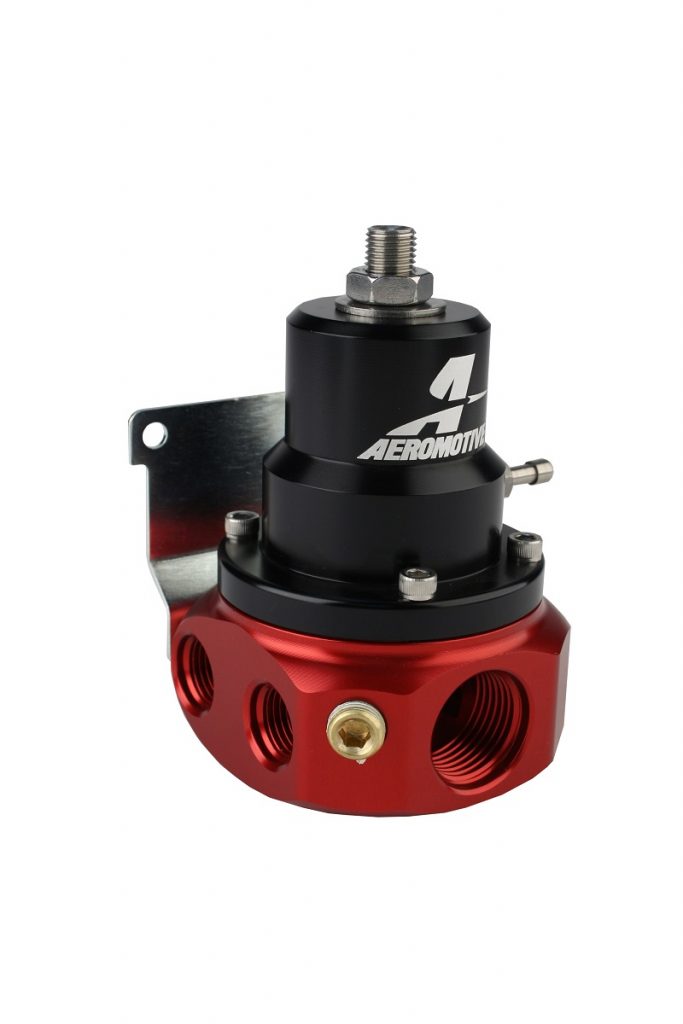
I am building a mild, street big-block Chevy that will be carbureted but I’d like to run one of those in-tank EFI conversions since that will be much simpler and cleaner. The company that I’m looking at actually offers two different pumps—one rated at 220 lph and another at 340 lph.
My question is: Will that pump crank out way too much pressure for my Holley carburetor? — J.M.
…
Jeff Smith: We have to get into a few more details to offer an accurate answer, but the short version is that either of those pumps will work just fine, but you will need a fuel pressure regulator and a return system.
But that simplified answer needs some details to fill in the blanks in order to make it all work properly.
First, let’s deal with the pumps themselves. These ratings are measured in liters per hour (lph).
A liter is equivalent to 0.26 of a U.S. gallon, so a 220-lph pump would be the same as 57.2 gallons per hour (gph).
A 340-lph pump is equal to 88.4 gph.
The quickest way to evaluate whether these pumps are capable of feeding your big block requires some simple math.
A gallon of gasoline weighs 6.2 pounds.
Therefore, the 57-gph pump is pumping 353 lbs. of fuel per hour.
We can estimate a capacity for how much horsepower this pump can support by using a brake-specific fuel consumption (BSFC) number. This specification is the amount of fuel combusted (in pounds) to make one horsepower for one hour.
Most engines at wide-open throttle (WOT) operate at a BSFC number of about 0.50—or a half-pound of fuel to make one horsepower.
So now, if we divide our 353 lbs. of fuel pump capacity (for the 57-gph/220-lph pump) by a BSFC number of 0.50 (353 / 0.5) we get 707 potential horsepower.
Clearly the small 220-lph pump has the ability to feed your engine—assuming you are not making more than about 650 horsepower. But this assumption isn’t entirely accurate because we must also take into account how that pump is rated.
Here’s where you have to be careful because many pumps are advertised at zero (0) pressure—or free flow.
As the fuel pressure increases, the volume decreases. Luckily for you, you only need 5 to 7 psi to feed your carburetor, so the reduction in flow will be minimal. We can go into much more detail, but clearly a 220-lph pump that’s probably rated at 43 psi, will actually deliver more fuel than you need at 5 to 7 psi.
This will also require a fuel pressure regulator.
Not all regulators are the same however. Generally, they can be separated into high-pressure and low-pressure applications.
They are also created as either dead head or return-style regulators.
We should explain that a dead head regulator means that the feed line is connected to the regulator but that there is no return. This is fine for older, vertical-style fuel pumps with an internal bypass built into them.
But for most in-tank pumps, it’s better to use a return-style regulator. This means you will need to plumb a return line back to the fuel tank.
For your example, let’s use an Aeromotive regulator. Aeromotive makes a low-pressure, carbureted return-style regulator (PN 13224) that will reduce the pressure and is adjustable from 3 to 15 psi. Of course, there are many other choices for return-style regulators including Holley, Weldon, and many others.
Running a smaller pump that will deliver plenty of fuel is a better choice because during light-load cruise situations, even this small pump will be returning more fuel back to the tank than the engine is using.
No sense in buying the larger pump when you don’t need it.
Having this system in place will also allow you to easily upgrade to electronic fuel injection at some later date since the fuel-delivery system will already be in place and ready to go with the addition of a high-pressure regulator.

Thanks for that info. I too was looking at using that style of in-tank pump for my carb’d bbc.
Jeff, I have a 1984 Chevy P30 454 cu in big block Pathfinder Motor home. I learned while working on the fuel transfer switch that the fuel pump on the engine does not work as the piston is stuck. So, they must have put the electric in line fuel pump on to make up for that prior to my ownership. Now, I have the aux tank working so what size electric in line fuel pump do I need i.e psi and GPM when that tank is fueling the engine? It has a return fuel line to both tanks.
I need a good fuel pump for my 454 mild cam roller rocked wats a good pump an wats the psi I need